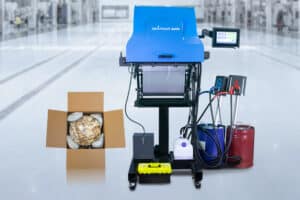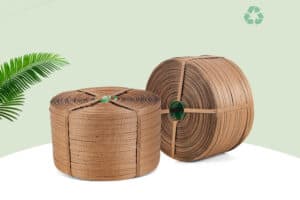As societies increasingly prioritize environmental sustainability, the search for alternative materials to replace traditional plastic bubble wrap intensifies. One promising solution is the emergence of paper bubble wrap. This article delves into the realm of bubble wrap alternatives, specifically focusing on the unique characteristics and benefits of paper bubble wrap. We will explore the two primary forms of paper bubble wrap – honeycomb paper and paper bubble- highlighting their environmentally friendly aspects and how they effectively mimic the protective qualities of traditional bubble wrap. Join us as we delve into the world of this innovative packaging material!
Understanding Paper Bubble Wrap
Paper bubble wrap is a highly versatile and eco-friendly substitute for traditional plastic bubble wrap. It comprises two main variations: honeycomb paper and concave-convex pressed buffer paper. Both options effectively combine practicality and sustainability.
Honeycomb paper bubble wrap is constructed by expanding and connecting honeycomb-shaped cells to form a three-dimensional structure. This design grants excellent cushioning and shock absorption properties, creating a protective barrier around fragile items. Additionally, honeycomb paper can be easily stacked due to its interlocking structure, thereby reducing transportation volumes and costs.
Paper bubble, on the other hand, relies on a cleverly designed pattern of depressions and protrusions, replicating the traditional bubble wrap’s buffering effect. The pressed buffer paper is made from recycled materials, offering enhanced eco-friendliness. It is ideal for use in packaging delicate items, ensuring their safe transit while minimizing the environmental impact.

The Environmental Advantages of Paper Bubble Wrap
One of the primary advantages of paper bubble wrap over traditional plastic alternatives lies in its significantly reduced ecological footprint. Traditional plastic wraps are notorious for their non-biodegradable nature and contribution to landfill waste. However, paper bubble wrap addresses these concerns brilliantly.
Firstly, paper is a renewable resource, making it an excellent choice for environmentally conscious consumers. Unlike plastic, which relies on fossil fuels for production, paper is manufactured from sustainable forests and can easily be recycled or composted at the end of its life cycle.
Additionally, the manufacturing process for paper bubble wrap consumes less energy compared to plastic bubble wrap, resulting in lower carbon emissions and reduced environmental impact. This makes paper bubble wrap an attractive option for those seeking greener packaging alternatives.
Another noteworthy advantage of paper bubble wrap is its compatibility with existing recycling systems. Most municipalities have established paper recycling programs, allowing for effortless recycling of paper bubble wrap. This, in turn, helps divert waste from landfills and encourages a circular economy.
Lastly, paper bubble wrap’s ability to reduce transportation volumes due to its stackable nature plays a significant role in reducing carbon emissions associated with transportation. By taking up less space, it allows for more efficient packing and shipping, contributing to a greener supply chain.
Practical Applications and Benefits
Paper bubble wrap’s versatility extends to its practical applications across various industries. Its ability to safeguard fragile items during transit makes it a preferred choice for businesses shipping delicate products such as electronics, glassware, and ceramics.
The honeycomb paper variant of bubble wrap exhibits remarkable strength and durability, ensuring the secure transport of even the most fragile or sensitive items. The honeycomb structure acts as a shock absorber, buffering any impact or vibration that may occur during shipping. This level of protection significantly reduces the risk of potential damage, thereby minimizing product returns and enhancing customer satisfaction.
Paper bubble, with its inherent cushioning properties, offers an equally effective protective solution. Its design enables it to conform to the shape of the packaged item, providing a customized fit that guarantees maximum protection against potential mishandling or accidents.
Moreover, unlike traditional plastic bubble wrap that can be cumbersome to dispose of, paper bubble wrap is easy to handle and dispose of responsibly. Recipients can readily recycle, compost, or reuse it for future packaging needs, contributing to a circular economy and minimizing waste generation.
Ameson: the leading paper bubble wrap manufacturer
Ameson has established itself as a prominent manufacturer of packaging solutions, with a strong emphasis on sustainability. With a dedication to providing viable alternatives to traditional plastic bubble wrap, the company has developed innovative products that prioritize eco-friendly practices. Through a combination of cutting-edge technology, rigorous research, and a commitment to preserving the environment, Ameson has become a pioneer in the industry.
In a world where environmental considerations are paramount, paper bubble wrap emerges as an ideal alternative to traditional plastic bubble wrap. Offering impressive shock absorption capabilities, stackability, and compatibility with existing recycling systems, paper bubble wrap seamlessly combines practicality with sustainability. Its variants – honeycomb paper and paper bubble – address the need for eco-friendly packaging materials without compromising on functionality. As more businesses and individuals embrace the shift towards environmental responsibility, paper bubble wrap presents itself as the perfect choice, guaranteeing reduced environmental impact without compromising the integrity of packaged contents.



